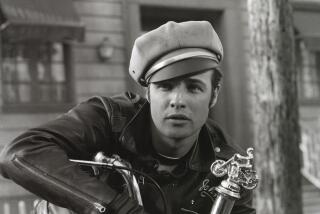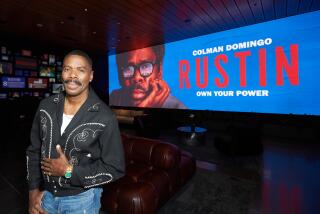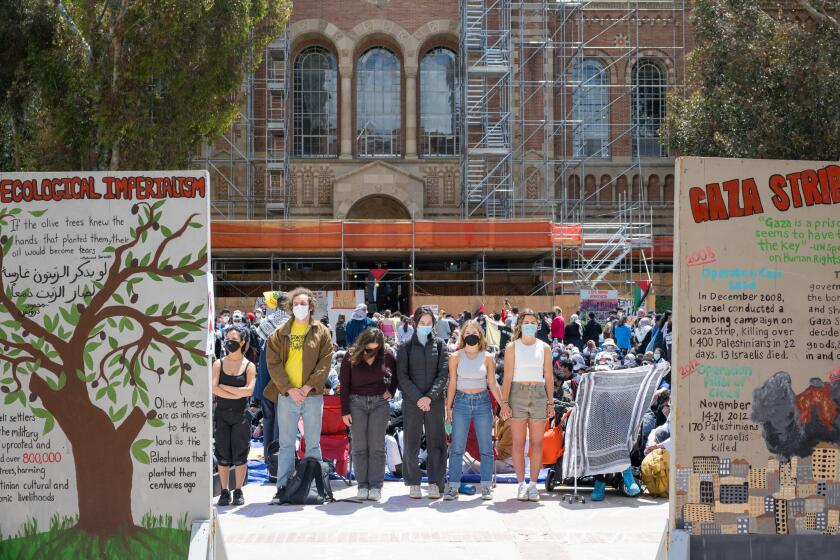Tomboys, trans boys and ‘West Side Story’

In the original “West Side Story,” Anybodys was a fleeting but memorable character. She was as tough as the boys — tougher, maybe — though they often reminded her that she didn’t belong. They insulted her; they told her to beat it. When she didn’t want to get married because it was “too noisy,” A-Rab snapped at her: “You ain’t never gonna get married. Too ugly.”
The Jets punished her at first for playing the role of girl wrong. But they had a name for such a girl: tomboy.
The story is set in the 1950s, when tomboys were common characters in novels, film and TV — think of Scout Finch, the short-haired heroine in overalls from “To Kill a Mockingbird.” Tomboys were certainly not the norm, but they weren’t far from normal, and their representation sent a message to girls that embracing aspects of masculinity was, if not sanctioned, then at least understood. By the 1970s, tomboys were a valued archetype of girlhood, even a pinnacle to achieve, until they were replaced by highly feminine “girl power” archetypes such as the Spice Girls.
In the past 15 years or so, as the notion of gender identity — that people have a sense of their gender, independent of their bodies — has gained more traction, and as trans people have gone from marginalized to recognized, there’s been increasing speculation about both real and fictional gender nonconforming people of the past. Would “tomboys” of yore have identified as trans or nonbinary, had that idea and language been available to them?
A writer working on a book about Amelia Earhart told me she thinks Earhart might have identified as nonbinary. Louisa May Alcott, some have conjectured, might have been trans because she said such things as: “I am more than half-persuaded that I am a man’s soul, put by some freak of nature into a woman’s body.”
Some female soldiers who fought as men in the Civil War are now identified as trans. So is James Miranda Barry, the U.K.’s first female-born surgeon who lived all his life, in public and private, as a man, and worked hard to ensure that that no one would discover his secret. A new book set to become a miniseries about a Scottish nobleman named Ewan Forbes-Sempill (née Elizabeth), who likely had an intersex condition that caused him to be misidentified as female, defines him as trans, too.
As for fictional characters, some say Mulan, the Chinese female warrior who fights as a man, is trans. When a production of Enid Blyton’s “Malory Towers” was staged in 2019, the tomboy character Bill was portrayed as a trans boy. And now Anybodys has been recast in the “West Side Story” remake; she’s not a scrappy girl but a trans man (played by Iris Menas, a nonbinary actor), which has led to the film’s banning in several countries hostile to transgender identities.
David Saint, the executor of the estate of Arthur Laurents, who wrote the book for “West Side Story,” told Insider that Anybodys “is a character who was a man born in a female’s body. End of story.”
This is cause for celebration among trans people, who find themselves represented better and more often now than at any other time in history. But mapping trans identities onto masculine females of the past, whether real or fictional, is complicated. It imposes modern interpretations onto history and removes models of gender nonconformity among girls.
Up until the turn of the 20th century, sex, gender and sexuality were all largely intertwined in the public mind. Though people engaged in homosexual sex acts, there wasn’t a mainstream social category for gay people. Any woman who had “fallen in love … with so many pretty girls and never once the least bit with any man,” as Alcott once said, might simply believe that they had the soul of one sex and the body of another.
A concept of gender — that masculinity and femininity are not inextricably linked to being male or female — came later. In the middle of the 20th century, sexologists and psychologists working with people known then as hermaphrodites and transsexuals coined the term “gender identity.” It largely stayed in that niche medical and psychological context until this century, when the idea of man and woman as social, not biological, categories that anyone could identify with became more popular.
Assuming that people in the past lived as the opposite sex because of gender identity ignores historical roles and norms and laws that created confining sex-based scripts. Barry, for instance, born Margaret Ann Bulkley, could not have been a doctor if he had lived as a woman, let alone risen to become the British Army’s second highest medical officer.
Did Barry’s instructions to keep his natal sex a secret stem from his male gender identity (a concept not yet articulated), or did he have other reasons to take his secret to the grave? Was he a trans man living his truth or an oppressed woman without the option to live hers?
Would Forbes-Sempill have claimed they/them pronouns, and would that have allowed him to hold onto his property and title, and marry the woman he loved, as only men could do in Scotland? Was Mulan a liberated trans man or a woman who couldn’t otherwise fight in wars because of regressive ideas about females? Would Anybodys have transitioned had that option been available, or would she not have needed to if the boys had accepted her as a gender nonconforming girl or if her character had been written in the tomboy-appreciative 1970s?
Are we righting history, or rewriting it?
Tomboy, sexist though the word may be, once conferred a freedom upon girls to explore the blue side of the pink/blue divide and push the boundaries of acceptable behavior and appearance. But that freedom usually evaporated at puberty. Its offerings were limited and temporary.
We are now expanding gender boundaries for all ages. But in some ways we’re also narrowing them. If Anybodys is no longer considered a girl, that limits “girl” and “woman” to only the most feminine of females. The message to them is that if they veer too far toward masculine — being tough, rejecting dresses and skirts, wearing short hair — they’re no longer girls. While it is wonderful to have trans characters represented in film, re-gendering tomboys as trans can end up reinforcing stereotypes. What liberates one group, may limit another.
Inclusivity and diversity in race, class, sexual orientation, gender identity and body type in all kinds of media represent is real progress. While it is impossible to know how people from the past would have identified or lived if 21st century choices had been available, I imagine that those who suffered because ideas of gender in their time didn’t accommodate them would indeed find today’s zeitgeist freeing.
But imposing modern definitions of gender on the past, and assuming that all gender nonconforming people would change their pronouns or bodies, doesn’t make room for masculine girls and feminine boys to be themselves; it tells them that they have to be somebody else.
Lisa Selin Davis is the author of “Tomboy: The Surprising History and Future of Girls Who Dare to Be Different.”
More to Read
A cure for the common opinion
Get thought-provoking perspectives with our weekly newsletter.
You may occasionally receive promotional content from the Los Angeles Times.






